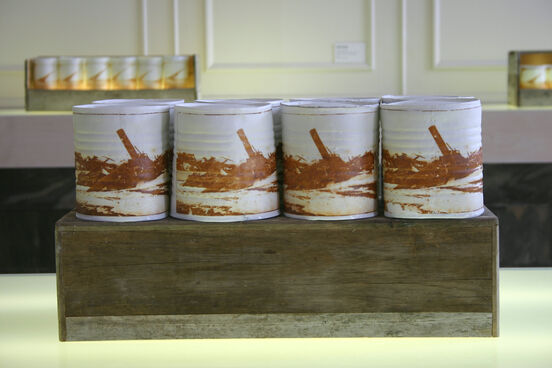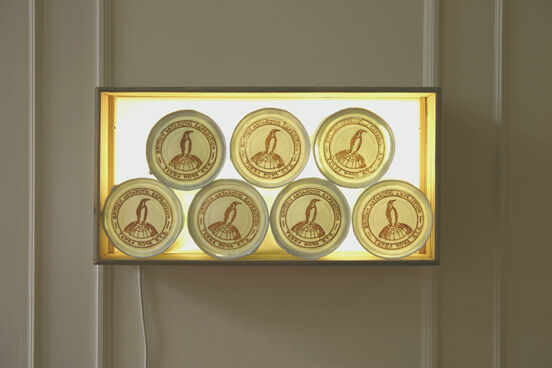In this new installation, maker Raewyn Atkinson alludes to the competing and complex designs – economic, heroic, political, social - that various expeditions and nations have had, and still have, for Antarctica. Raewyn Atkinson first visited Antarctica as an Antarctic Arts Fellow and this new installation builds on works she has created since traveling to Antarctica in 2000 and 2003.
Crates of canned provisions were, and still are, taken to Antarctica by visitors in great quantities. Remaining old and unopened cans are moving reminders to present day visitors of those who have gone before and have perished. Discarded empty cans abound and pose a question about the environmental cost of human occupation of a place that most of us conceive of as pristine. In Designs on Antarctica the porcelain can is a symbol of the human habitation of Antarctica and our conceptions of Antarctica as a desirable commodity.
Atkinson makes her own designs on Antarctica by marking her porcelain cans with 'designs' that relate to how she sees we have encountered and conceived of Antarctica. The geopolitical Antarctica is represented by the emblems of various Antarctic expeditions. Economic Antarctica, a source of whales and seal fur, is represented by images of whales. Heroic Antarctica is marked by photographic images of Captain Scott's expedition. Antarctica the new tourist destination is represented by works with a number of designs including the unopened tear tab cans just waiting to be opened and consumed. The myth of mythic Antarctica is represented by works bearing the design of the Virgin of Antarctica. Writer Felicity Milburn writes of these works "this strangely affecting image is a reminder that just as we transform Antarctica, it transforms us, creating a legacy more lasting and compelling than photographs of travelogues can afford."

Raewyn Atkinson, Deception Island, 2005.

Raewyn Atkinson, Terra Nova, 2005.